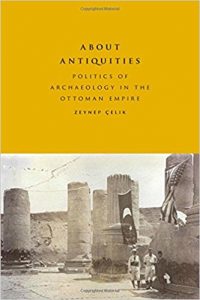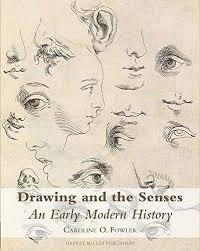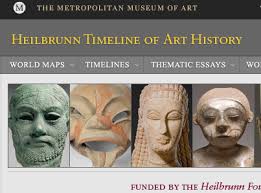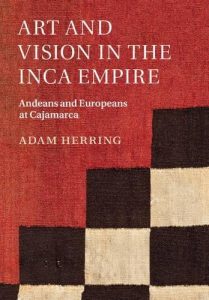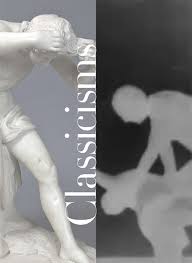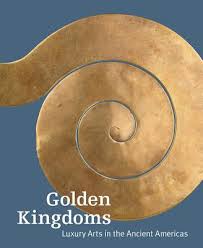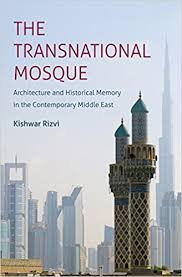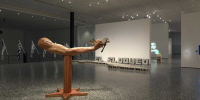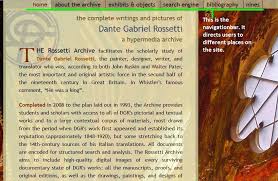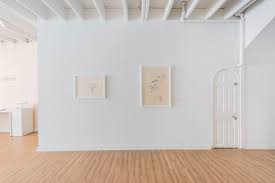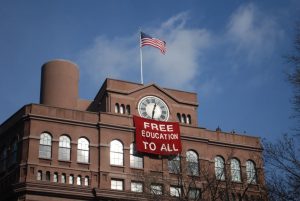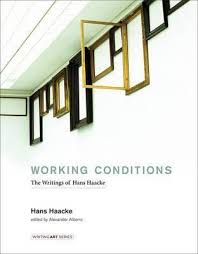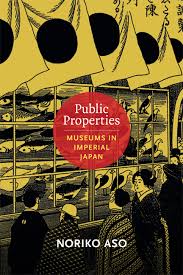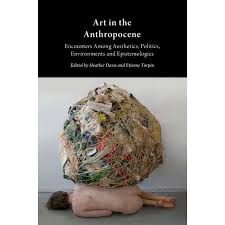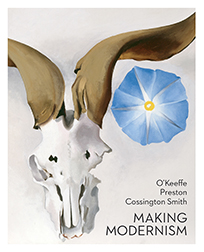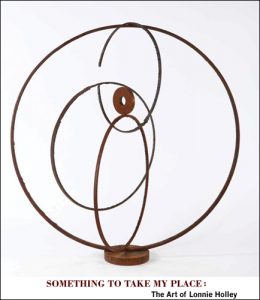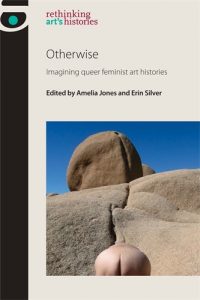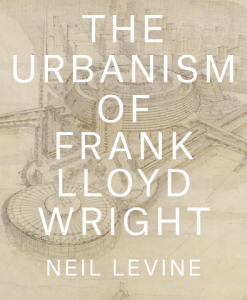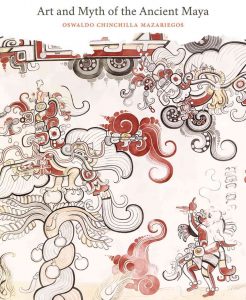CAA News Today
New in caa.reviews
posted by CAA — March 23, 2018
Susanna Temkin reviews Adiós Utopia: Art in Cuba Since 1950 edited by Ana Clara Silva and Eugenio Valdés Figueroa. Read the full review at caa.reviews.
Namiko Kunimoto writes about Bachelor Japanists: Japanese Aesthetics and Western Masculinities by Christopher Reed. Read the full review at caa.reviews.
Anne Helmreich explores The Complete Writings and Pictures of Dante Gabriel Rossetti, freely distributed by IATH and the NINES consortium under a Creative Commons License, www.rossettiarchive.org, edited by Jerome J. McGann. Read the full review at caa.reviews.
Cecelia Feldman examines About Antiquities: Politics of Archaeology in the Ottoman Empire by Zeynep Ҫelik. Read the full review at caa.reviews.
David Karmon writes about Drawing and the Senses: An Early Modern History by Caroline O. Fowler. Read the full review at caa.reviews.
Nina Dubin discusses Classicisms edited by Larry F. Norman and Anne Leonard. Read the full review at caa.reviews.
Manuel Aguilar-Moreno reviews the exhibition catalogue Golden Kingdoms: Luxury Arts in the Ancient Americas edited by Joanne Pillsbury, Timothy F. Potts, and Kim N. Richter. Read the full review at caa.reviews.
John Muse writes about the exhibition Yoonmi Nam: Still at The Print Center in Philadelphia. Read the full review at caa.reviews.
Meghan Tierney reviews Art and Vision in the Inca Empire: Andeans and Europeans at Cajamarca by Adam Herring. Read the full review at caa.reviews.
Naraelle Hohensee explores the Heilbrunn Timeline of Art History, a digital resource of the Metropolitan Museum of Art. Read the full review at caa.reviews.
Emily Neumeier discusses The Transnational Mosque: Architecture and Historical Memory in the Contemporary Middle East by Kishwar Rizvi. Read the full review at caa.reviews.
News from the Art and Academic Worlds
posted by CAA — March 21, 2018
Each week CAA News summarizes articles, published around the web, that CAA members may find interesting and useful in their professional and creative lives.
In a Historic Vote, Renowned Art School Cooper Union Commits to Bringing Back Free Tuition For All
The school may be tuition-free again as early as 2029. (artnet News)
How Do You Know If You’ve Hung a Painting Upside Down?
Genevieve Habert was the only one to realize something was amiss at the Museum of Modern Art’s Henri Matisse exhibition. (Artsy)
‘I Need a College Degree to Make This?’ Asks Arizona Teacher Who Posted Salary Online
Arizona teachers are mobilizing after the West Virginia teachers’ strike. (Star Telegram)
Clashing Visions, Simmering Tensions: How a Confluence of Forces Led to MOCA’s Firing of Helen Molesworth
The news that Helen Molesworth, one of the most prominent curators in the United States, had been fired from her job at MOCA last week sent shockwaves through the art world. (artnet News)
Long Before MRIs, Santiago Ramón y Cajal Revealed the Inner Workings of the Brain
American viewers are getting a chance to see Santiago Ramón y Cajal’s drawings for the first time. (Artsy)
How Much of Conservators’ Work Should Be Visible and How Much Should Be Hidden?
The release of a pre-conservation image of Salvator Mundi reignites debate over the transparency of conservators’ interventions. (The Art Newspaper)
Manager of the Annual Conference
posted by CAA — March 20, 2018
Please note: This position has been filled. Thank you.
CAA – Advancing Art & Design
50 Broadway, Fl 21
New York, NY 10004
Date posted: March 20, 2018
Position Title: Manager of Annual Conference
Supervisor: Director of Programs and Publications
Full-time, salaried with benefits
Founded in 1911, CAA is the preeminent international leadership organization in the visual arts, promoting the field through intellectual engagement, advocacy, programs and a commitment to the diversity of practices and practitioners. Each year, CAA offers an Annual Conference, publishes two scholarly journals and offers a variety of other programs. Visit CollegeArt.org for a complete description of programs and offerings.
CAA has more than 9,000 members worldwide. The majority of members are curators, art historians, scholars, visual artists and designers. Each year, members renew their membership to CAA.
Responsibilities include:
- Answers inquiries and provides information related to the CAA conference. Maintain all conference-related records.
- Manages and maintains all proposal submissions for the CAA conference through the proposal submission database. Manages related correspondence.
- Assists Director with meetings of the Annual Conference Committee and with the scheduling of Annual Conference program including conference sessions, meetings, workshops, events, etc.
- Manages all aspects of applications to poster sessions and ARTexchange.
- Develops and maintains a pool of volunteers and mentors to serve CAA’s professional development program needs. Selects and assigns mentors and mentees. Manages mentoring workshops at the CAA conference.
- Assists Student and Emerging Professionals Committee and Services to Artists Committee with program planning and scheduling of activities and events.
- Assists Director with the planning of and correspondence related to special panels.
- Manages conference registration, reimbursements, and/or payments for special guest scholars, artists, and workshop leaders.
- Coordinates the CAA conference Awards for Distinction ceremony including: making arrangements for awardees; assisting with Convocation production.
- Assists with the development and drafting of all conference publications. Coordinates with designer. Maintains session information on website.
- Provides Communications department with content for CAA conference communications and presentations.
- Creates CAA staff schedule for the conference.
- Manages complimentary hotel reservations, including staff rooms, and acts as point person with service provider.
- Coordinates all aspects of on-site temporary conference staff including hiring, scheduling, training, supervising, and following up on invoicing and payments.
- Facilitates conference sessions and activities on-site. Oversees all AV needs for sessions. Acts as primary contact with AV service provider during the conference.
- Administers various travel grant programs. Maintains records and coordinates applications for travel grant applicants and recipients. Manages reimbursements.
- Works collaboratively to ensure smooth planning, operation, and close out of the annual conference.
- Assists with other program management as assigned.
Required Qualifications:
- Minimum B.A., preferably in the visual arts, art history or related field.
- A minimum of three years experience planning large events and/or supporting academic conferences is required.
- Ability to work independently, organize work, and follow through on details.
- Experience with spreadsheets, systems and database management, and generally accepted programs and office equipment required.
- Excellent writing and editing skills and oral communication.
- Excellent customer services skills. Pleasant demeanor. Ability to remain poised under pressure.
- Flexibility, creativity, and initiative.
- Should possess tact, discretion, and the ability to work confidentially.
- Ability to work independently and in collaboration with others.
- The ability and willingness to work evening and weekend hours as needed.
Interested individuals should submit a cover letter and resume to Tiffany Dugan, Director of Programs and Publications via email at tdugan@collegeart.org. Applications accepted until all positions are filled. Please include the names and contact information for three references who can speak to your ability to perform the tasks requested.
CAA is an equal opportunity employer and considers all candidates for employment regardless of race, color, sex, age, national origin, creed, disability, marital status, sexual orientation, gender expression or political affiliation.
Call for Papers: Art, Design & Society | CIHA India Colloquium 2018
posted by CAA — March 20, 2018
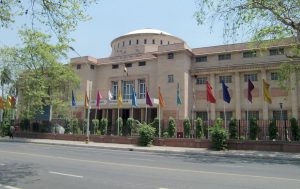
The National Museum Institute (NMI) in New Delhi, India. Image: Wikimedia Commons
New Delhi, India, November 27 – 30, 2018
Deadline: May 7, 2018
ART, DESIGN & SOCIETY
Comité International d’Histoire de l’Art (CIHA) India Colloquium 2018
Art and design are intrinsic to all forms with aesthetic value. In the modern world, the dichotomy between art and design was created by the socio-political and economic changes that were brought about by the industrial revolution and colonization. This has led to the paradoxical paradigm wherein the utilitarian designs of the past are perceived as art in the present and are displayed in museum spaces.
In countries like India, art institutions are products of colonialism which aimed at instilling western values leading to the collapse of traditional structures of art creation, dissemination and consumption. The living traditions of indigenous, popular and ritual art which formed the major corpus of artistic production in societies worldwide went unnoticed in the grand narratives. This led to the exclusion of a vast array of tangibles and intangibles that engendered incomplete perceptions of the past across the world.
This colloquium aims at bringing together the smaller narratives that have often been overlooked but which are nonetheless important parts of the tapestry of humanity. It has also become imperative that we re-examine the notions of art and design to understand the essence of the creative process across various cultures and encourage discussion and discourse on their interface and intersection with society. The colloquium particularly intends to probe the role of categorization and enquire into the very frameworks within which art & design operate.
Against this background, the colloquium would like to call for papers under the following topics:
- Design of the Past: Art of the Present
- Synthesizing the Sacred and the Secular
- Art & Design: Expressions of Conflict and Synthesis in Society
- Utility to Frivolity
- Space, Design & Art
- Power, Politics & Propaganda
- Sustainability: Practice and Production
- Vision, Perception and Interpretation
- Signs & Symbolism in Art & Design
- Prevailing Over Prejudice: Untold Stories
- Interpreting the Intangible Through the Tangible
- Impacting Society: Social & Digital Media
- Harmonizing the Individual and the Collective
- Art History: The Melting Pot
We invite paper presentations of 20 minutes. Please send a title of your proposed paper, an abstract of between 300 and 350 words. Please write the word “Abstract” in the subject line of your e-mail. Submissions must be sent to cihaindia2018@gmail.com
Closing date for the first call for papers: Monday, May 7, 2018
Kindly note that participation in the colloquium will only be confirmed after receipt of payment of registration fee. Click here to register.
CONVENERS:
Prof. (Dr.) Anupa Pande
Professor & Head, Department of History of Art
Director & Pro-Vice-Chancellor, National Museum Institute
Dr. Savita Kumari
Assistant Professor, Department of History of Art
National Museum Institute
Website: cihaindia2018.in
Elizabeth Moran and Erica Molesworth
posted by CAA — March 19, 2018
The weekly CAA Conversations Podcast continues the vibrant discussions initiated at our Annual Conference. Listen in each week as educators explore arts and pedagogy, tackling everything from the day-to-day grind to the big, universal questions of the field.
This week, Elizabeth Moran and Erica Molesworth discuss teaching dark room to digital natives.
Elizabeth Moran is an artist and lecturer in the Art, Media, and Technology program at Parsons School of Design. Her work investigates how varying belief systems that inform our understanding of recorded evidence.
Erica Molesworth is an artist and lecturer in photography at California College of the Arts and at San Francisco Art Institute; she is interested in the expanded field of photography and its intersection with moving images and digital media.
New in caa.reviews
posted by CAA — March 16, 2018
Lisa Lee reviews Something to Take My Place: The Art of Lonnie Holley by Bernard Herman. Read the full review at caa.reviews.
Frédérique Baumgartner examines Delacroix and His Forgotten World: The Origins of Romantic Painting by Margaret MacNamidhe. Read the full review at caa.reviews.
Scott Volz writes about Art in the Anthropocene: Encounters Among Aesthetics, Politics, Environments and Epistemologies edited by Heather Davis and Etienne Turpin, as well as Against the Anthropocene: Visual Culture and Environment Today by T. J. Demos. Read the full review at caa.reviews.
Alison Syme discusses Otherwise: Imagining Queer Feminist Art Histories by Amelia Jones and Erin Silver. Read the full review at caa.reviews.
James A. Doyle considers Art and Myth of the Ancient Maya by Oswaldo Chinchilla Mazariegos. Read the full review at caa.reviews.
Ryan Donovan Purcell explores The Urbanism of Frank Lloyd Wright by Neil Levine. Read the full review at caa.reviews.
Chelsea Weathers writes about Working Conditions: The Writings of Hans Haacke edited by Alexander Alberro. Read the full review at caa.reviews.
Seung Yeon Sang reviews Public Properties: Museums in Imperial Japan by Noriko Aso. Read the full review at caa.reviews.
Louise Mayhew examines O’Keeffe, Preston, Cossington Smith: Making Modernism edited by Lesley Harding and Denise Mimmocchi. Read the full review at caa.reviews.
CAA at 2018 Arts and Humanities Advocacy Days in Washington, DC
posted by CAA — March 16, 2018
CAA staff in Washington, DC (left to right): Joelle Te Paske, media and content manager, Alison Chang, sponsorship and partnership manager, Aakash Suchak, grants and special programs manager, Hunter O’Hanian, executive director, and Nick Obourn, director of communications, marketing, and membership.
Earlier this week CAA staff traveled to Washington, DC for Americans for the Arts’s Arts Advocacy Day and National Alliance for the Humanities’s Humanities Advocacy Day.
After a day of breakout sessions and briefings on Monday, staff visited congressional offices on Tuesday to advocate for continued funding for NEA, NEH, IMLS, CPB, and support for the arts, humanities, and higher education. See our on-the-ground updates.
We visited 18 congressional offices representing three different states, with positive responses from both Democrats and Republicans. We meet with staff or dropped off materials with:
New York
Sen. Chuck Schumer (D-NY)
Rep. Grace Meng (D-NY 6th District)
Dropped off materials with Rep. Nydia Velázquez (D-NY 7th District)
Dropped off materials with Rep. Hakeem Jeffries (D-NY 8th District)
Rep. Yvette Clarke (D-NY 9th District)
Rep. Jerrold Nadler (D-NY 10th District)
Dropped off materials with Rep. Eliot Engel (D-NY 16th District)
Rep. Nita Lowey (D-NY 17th District)
Rep. Sean Maloney (D-NY 18th District)
Wisconsin
Sen. Ron Johnson (R-WI)
Rep. Mark Pocan (D-WI 2nd District)
Rep. Sean Duffy (R-WI 7th District)
Rep. Mike Gallagher (R-WI 8th District)
Connecticut
Sen. Richard Blumenthal (D-CT)
Rep. John Larson (D-CT 1st District)
Rep. Joe Courtney (D-CT 2nd District)
Rep. Jim Himes (D-CT 4th District)
Rep. Elizabeth Esty (D-CT 5th District)
Learn more about Advocacy Days below.
ARTS ADVOCACY DAY
March 12 – March 13, 2018
Hosted by Americans for the Arts
Arts advocates from across the country convene in Washington, DC for Americans for the Arts’s annual Arts Advocacy Day each year. Arts Advocacy Day brings together a broad cross section of America’s cultural and civic organizations, along with more than 700 grassroots advocates from across the country, to underscore the importance of developing strong public policies and appropriating increased public funding for the arts. Learn more.
HUMANITIES ADVOCACY DAY
March 11 – March 13, 2018
Hosted by National Alliance for the Humanities
Humanities Advocacy Day provides the opportunity to connect with a growing number of humanities advocates from around the country. Together, advocates will explore approaches to year-round advocacy on college campuses and in local communities while also preparing for Capitol Hill visits. On March 13, they will visit House and Senate offices to make a persuasive case for federal funding for the humanities. Learn more.
WHY DID CAA ATTEND?
For two years in a row, we’ve offered our complete and total opposition to efforts to eliminate funding for the National Endowment for the Arts (NEA), the National Endowment for the Humanities (NEH), and other domestic programs that fund education, arts, and humanities initiatives, as outlined in the 2018 and 2019 White House budget proposals.
Over the last year, we’ve also solicited feedback from our members on a variety of issues that impact the arts, humanities, and higher education, including:
- Gun control and the proposal to arm teachers
- Tax reform and its effect on higher education
- Embracing and supporting diverse voices in the arts
- Hiring standards for part-time faculty
- Removing or preserving Confederate monuments
- The Muslim Travel Ban
For more on our advocacy efforts, click here.
We encourage you to be vocal about your support for the arts and humanities. Click here to access the CAA Arts and Humanities Advocacy Toolkit.
An Interview with Artist Serhat Tanyolacar on Censorship at Polk State College
posted by CAA — March 15, 2018
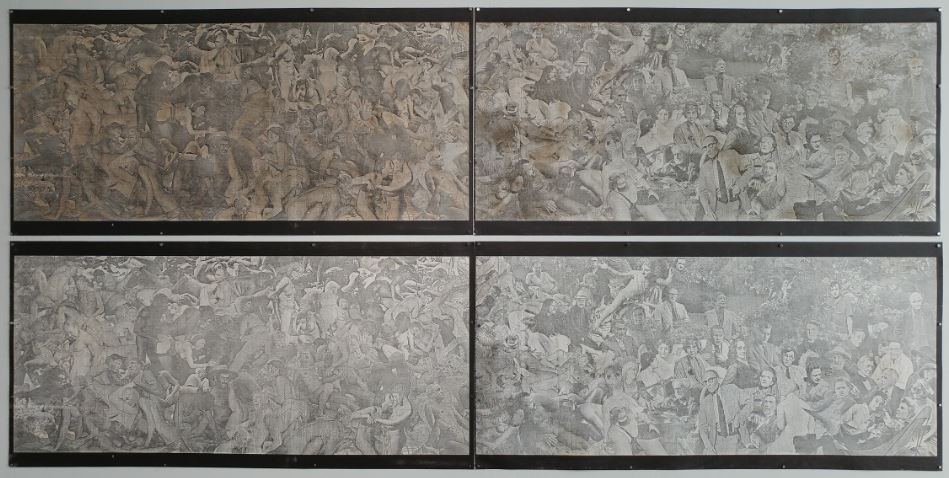
Serhat Tanyolacar, Death of Innocence, 2018. Courtesy the artist’s website. serhattanyolacar.com
In January, Serhat Tanyolacar, an adjunct faculty member in the art department at Polk State College in Florida, was invited to submit artwork to an open faculty show. The work he submitted, Death of Innocence, was subsequently rejected by the college as being “too controversial” to display. The artwork juxtaposes sexually explicit images of political figures such as Donald Trump, Betsy DeVos and Vladimir Putin —”the world as it is” in Tanyolacar’s words—with “the world as we could be,” featuring artists, poets, and writers, like T.S. Eliot and his wife Vivienne Haigh, Neal Cassady, Sylvia Plath, Bertolt Brecht, Nâzim Hikmet, and fictional characters such as Atticus Finch and Cyrano de Bergerac.
CAA media and content manager Joelle Te Paske spoke recently with Tanyolacar via phone about his experience.
“As you may already know, three months ago, all Polk State College art faculty received an email from Holly Scoggins, the art department head. Basically, we were being asked to participate in an art faculty exhibition on the Lakeland campus. There was no criteria listed.”
Tanyolacar said he responded the same day in an email with pictures of two of his works, including Death of Innocence, and was assured verbally by Scoggins, ‘We always support controversial work.’ As Tanyolacar explains, “To be extremely honest, I don’t think she looked at the work until the very last moment. This is what I feel.”
He continued: “Then, I waited. I didn’t hear anything until February 6th, and February 8th was the deadline. I received an email saying: ‘After review by the gallery committee’—and there was no committee, no nothing, until this moment—’the committee has decided Death of Innocence should not be displayed in the faculty art show. It will be too controversial to display at this time, and we would be happy for you to display some of your other artwork.'”
Subsequently Tanyolacar says he received criteria after the deadline, and then a phone call from the dean of academic affairs to schedule a meeting between himself, Scoggins, and the college president, Angela Garcia Falconetti. During the meeting Falconetti apologized, but maintained the work would not be shown.
“Meanwhile,” Tanyolacar continued, “I started receiving friend requests and messages from very disturbing individuals, on social media, on Facebook and Twitter, as well as private phone numbers. I think I received six or seven phone calls. I answered two of them, but nobody said anything.”
Tanyolacar has since reached out to FIRE, National Coalition Against Censorship, and PEN America for support on the issue. “Polk State should be an example.” he said. “[It’s] not only Polk State—other schools, other institutions, they are all dealing with academic freedom issues and oppression, but people chose to be passive and silent.”
FIRE and the National Coalition Against Censorship wrote to Falconetti last month, asking her to re-evaluate the decision, but a university spokesperson said they had no comment.
Summer Lopez, PEN America Senior Director of Free Expression Programs, issued the following statement:
Having provided no criteria for works to be included in their exhibit, Polk State College cannot retroactively determine that certain topics or viewpoints are off limits. Artistic freedom must be protected on our college campuses in particular, as it is there that open debate and the sharing of diverse viewpoints contributes most directly to intellectual growth and freedom. At a moment when universities around the country are struggling with deeply challenging issues around free expression and young people are actively engaging in public debate on these and other crucial matters, Polk State College does its students a disservice by suggesting they cannot handle a little controversial art in their hallways.
Tanyolacar is no stranger to controversy surrounding his work. He was also involved in a censorship debate in 2014, over a public artwork at the University of Iowa. He says: “I don’t give up on academia. I know that I have a voice in [it]. I take necessary risks. That’s a big part of my process, because otherwise, you cannot challenge the authority and display its flaws. That is my strategy—taking risks, and exposing the corruption, whether it is in academia or in politics.”
Read more: Polk State College deems explicit anti-Trump art “too controversial” for campus display (Tampa Bay Times)
This interview has been edited for length and clarity.
caa.reviews Seeks TEN Field Editors – Deadline Extended!
posted by CAA — March 15, 2018
CAA invites nominations and self-nominations for TEN individuals to join the caa.reviews Council of Field Editors for a three-year term, July 1, 2018–June 30, 2021. An online journal, caa.reviews is devoted to the peer review of new books, museum exhibitions, and projects relevant to art history, visual studies, and the arts.
The journal seeks ten field editors in the following areas:
- Latin American Art NEW CATEGORY
- Ancient Greek and Roman Art, Ancient Egyptian and Near Eastern Art
- Contemporary Art
- Digital Humanities
- Islamic Art
- Photography
- South/Southeast Asian Art
- Twentieth-Century Art
- Exhibitions: New York
- Exhibitions: Southwest
Working with the caa.reviews editor-in-chief, the caa.reviews Editorial Board, and CAA’s staff editor, each field editor selects content to be reviewed, commissions reviewers, and considers manuscripts for publication. Field editors for books are expected to keep abreast of newly published and important books and related media in their fields of expertise, and those for exhibitions should be aware of current and upcoming exhibitions (and other related projects) in their geographic regions.
The Council of Field Editors meets annually at the CAA Annual Conference. Field editors must pay travel and lodging expenses to attend the conference. Members of all CAA committees and editorial boards volunteer their services without compensation.
Candidates must be current CAA members and should not be serving on the editorial board of a competitive journal or on another CAA editorial board or committee. Nominators should ascertain their nominee’s willingness to serve before submitting a name; self-nominations are also welcome. Please send a cover letter describing your interest in and qualifications for appointment, a CV, and your contact information to: caa.reviews Editorial Board, CAA, 50 Broadway, 21st Floor, New York, NY 10004; or email the documents to staff editor Joan Strasbaugh, jstrasbaugh@collegeart.org.
Deadline extended! New deadline is: Tuesday, May 1, 2018.
News from the Art and Academic Worlds
posted by CAA — March 14, 2018
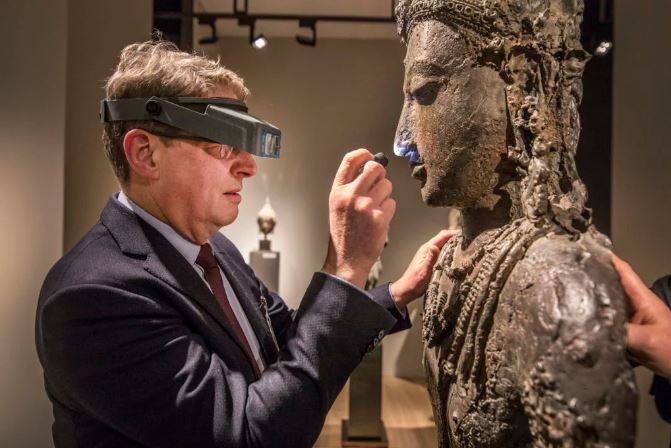
Vetting at the 2018 TEFAF Maastricht fair. Photo: Loraine Bodewes, courtesy of TEFAF via Artnet News.
Each week CAA News summarizes articles, published around the web, that CAA members may find interesting and useful in their professional and creative lives.
National School Walkout: Live Updates
Thousands of students walked out of their schools today in a nationwide demonstration, one month after a gunman killed 17 people at a high school in Florida. (The New York Times)
MOCA Fires Chief Curator Helen Molesworth for ‘Undermining the Museum,’ According to Report
The reasons behind the firing comes via artist and MOCA trustee Catherine Opie. (Artnet News)
New Adventures in Old Masters: How Art Historical Detective Work Gives Dealers at TEFAF an Edge
See how three TEFAF dealers found Canova’s “fake” self-portrait of Giorgione and a Munch better than MoMA’s. (Artnet News)
Picasso Painting Offered in Money-Laundering Scheme, US Feds Say
Earlier this month the US Department of Justice unveiled a multi-count indictment in a federal court. (The Art Newspaper)
Lost Art: Field of the Cloth of Gold
Noah Charney shares the stories behind some of art history’s most important works—those that we can no longer see. (The Art Newspaper)
Trump Nominates New Chairman for the National Endowment for the Humanities
President Trump on Friday nominated Jon Parrish Peede as chairman of the NEH, bringing to an end speculation about who would take the helm at an agency he has repeatedly targeted for elimination. (New York Times)
The Gray Market: Why Art Censorship Is Built into Facebook’s DNA
In late December, Facebook censored a user’s personal post featuring an image of the Venus of Willendorf. (artnet News)
Someone Yarn-Bombed a Guggenheim Museum Toilet with Gold Crochet
“We can confirm an intervention of a crocheted piece that covered a toilet on the museum’s Ramp 4.” (Hyperallergic)



